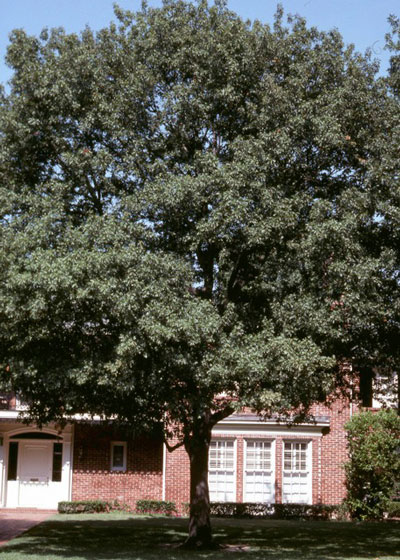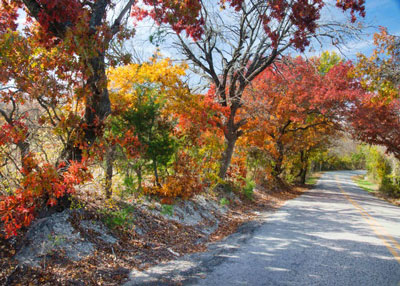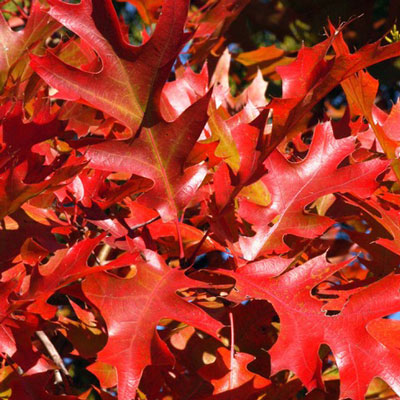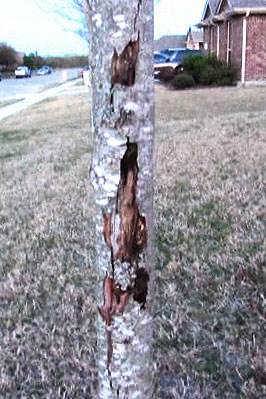Top Tree on My List: April 8, 2021
I have a list of the best shade trees for the majority of Texas. It includes pecans, cedar elms, Chinese pistachios (the lone non-native entry), live oaks, bur oaks, chinquapin oaks and (drum roll, please) Shumard red oaks.

That last one is my favorite shade tree. Shumard red oak (Quercus shumardii).

“But, Neil… Is it a fast grower?”
No. But it’s also not a slow grower, either. You really don’t want a fast-growing tree in your landscape, because they’re fraught with problems. Short life expectancies due to insects and diseases, weak wood, messy habits, poor soil adaptability – they’re just not plants you want to invite into your living spaces.
Here’s what I expect from my shade trees instead…
• Good looks. I don’t want an ugly tree if it’s going to be the biggest plant at my place. Looks come first.
• Adapted to what I can provide for it. The tree I select has to be able to thrive in the climate and soils I have for it.
• No pest problems. The large shade tree I choose can’t have serious issues with insects and diseases. I don’t have the equipment to spray it, and I don’t want to hire it done.
• Good form and strong branches. Some of our Texas trees are funny looking. And brittle. Or both.
• Longevity. Lynn and I have a great-granddaughter. I want a tree that I can plant with Jackie and know she will be able to bring her own grandchildren to its base and recount the day that we three planted it together.

I don’t put a lot of stock in spring or fall color of my shade trees, because both are such fleeting things. Flowers are nice, and, when it happens, fall color is glorious, but I’m more interested in the other 48 weeks out of the year. If I get the spring and fall shows, that’s extra bonus.
Facts about Shumard red oaks…
• Mature height and width 50 to 60 ft.
• Growth form is upright-oval, somewhat like a fat egg.
• Leaves are large, dark green and deciduous. On some trees they fall naturally in autumn. On other specimens they persist on the branches all winter, finally being crowded off as new leaves emerge in the spring.
• About the only insects you’ll encounter will be gall-forming types that cause tennis-ball-sized growths on the petioles of the leaves in the spring or that crimp the edges of leaves like the folds of the edges of tin cans. And there are many others as well, all equally benign.

• One warning: Wrap the trunks of new red oaks (also chinquapin oaks, live oaks, Chinese pistachios and red maples) for their first couple of years to protect them from sunscald. Their young bark is so thin that when they’re finally set out by themselves they aren’t tough enough to withstand the rigors of hot Texas sunshine. After a couple of years the bark splits and exposes the trunk’s interior tissues. Start at the ground line and wrap the trunk up to its lowest branches. You can use a plastic slip-on wrap, but I prefer the crinkled paper tree wrap instead.

• Another warning: Be sure you get a true Shumard red oak and not a northern pin oak (Quercus palustris). The two look very similar. National box stores bring trees in from great distances. It even happens to local landscapers sometimes.
The problem is iron deficiency. Pin oaks can’t handle alkaline soils, and it’s almost impossible (and highly impractical) to add enough iron to keep a large tree going. The tree on the left is a pin oak and it was taken out a year after this photo. The Shumard red oak is now magnificent.
